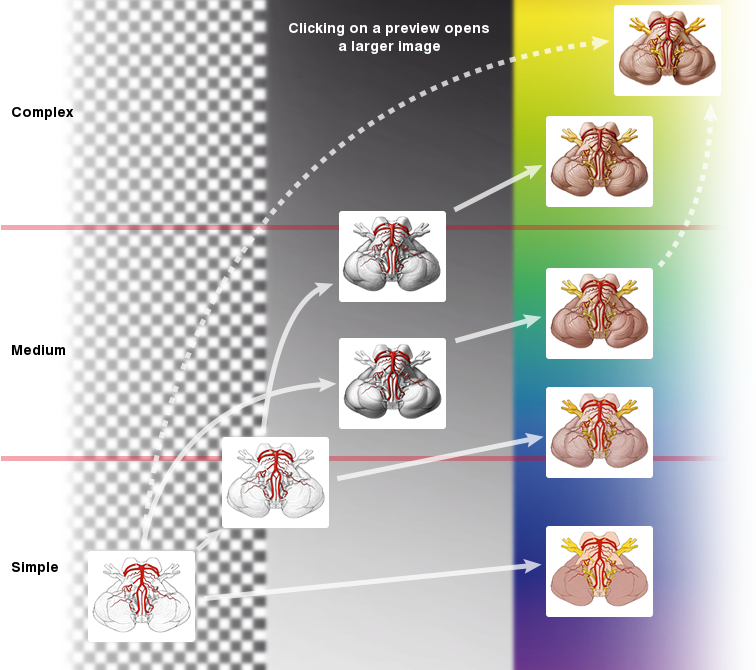 |
How content, style of execution and costs of an illustration relate It is common knowledge that many paths lead to Rome. But even if the destination is known, it is still up to the traveller to decide between economy,business, or first class. The metaphor of travel as an analogy is quite applicable to medical illustration, because the same questions await answers: Which specific content as destination must be conveyed to the target audience, and which visual means of transportation is appropriate? The more complex an illustration, the higher the costs. The complexity of an illustration depends on it´s content and style of execution. Frequently enough one determines the other. To narrow down the content, these questions can be helpful: The choosen style of execution determines the visual appearance of an illustration. Two questions are important: The overview on the left shows different styles of technical execution of the same motiv in digital media. This overview cannot be exhaustive, because elements of visual style can be combined rather variably, yet it provides a first orientation. Some of these styles are both final result as well as an intermediary to a more complex mode of execution, as indicated by the arrows. Complexity of execution does not necessarily equal highest aesthetic perfection. A simple execution of an illustration can satisfy the aesthetic requirements of good visualization as much as the highest possible level of detail and plasticity. What is important though is that detail and plasticity can be a carrier of visual information. The style of execution therefore influences also the content. |
